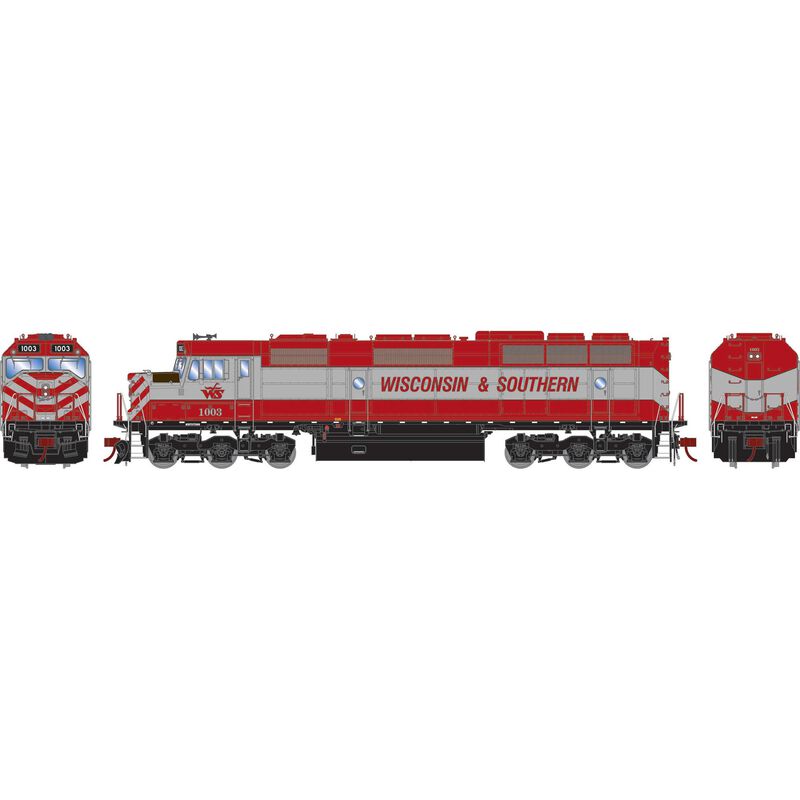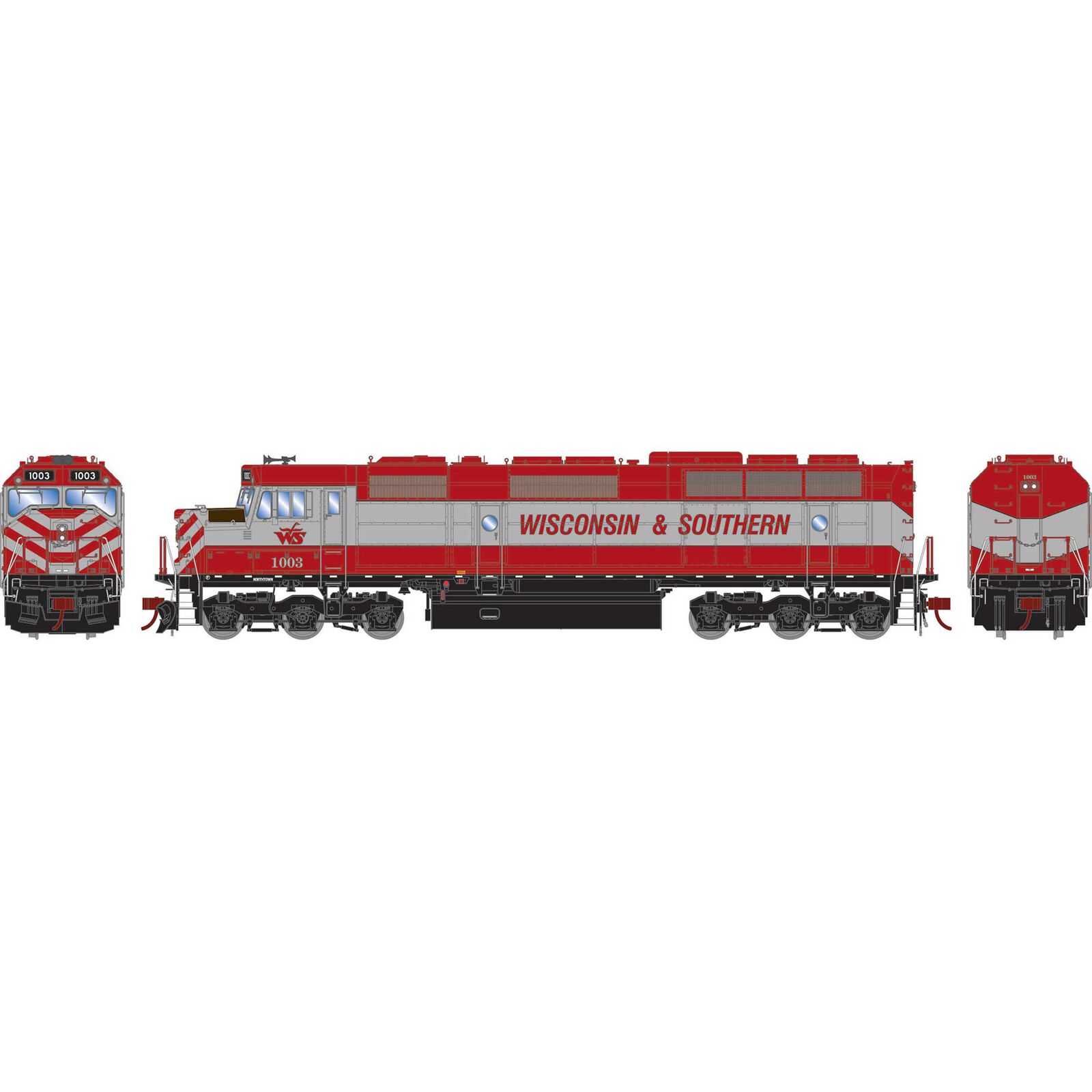PROTOTYPE AND BACKGROUND INFO
By the early 1960’s the Electro-Motive Division (EMD) was at a big disadvantage. Their 567 engine, in use for over 20 years, had reached it’s peak at 2,500 horsepower in a turbocharged 16-cylinder version. EMD released a new 645 engine in 1966. The most powerful locomotive using this series of engine was the SD45, powered by a 20-cylinder turbocharged 645E engine producing 3600 horsepower. EMD then offered the V20 645E engine in the SDP45 in a standard hood configuration and longer frame to occomodate the steam generator needed for passenger service. The EMD SDP45 was a good passenger locomotive, but to the Santa Fe Railway it did not look the part. EMD therefore designed a lightweight “cowl” body to cover the locomotive, though it did not, as in earlier cab units, provide any structural strength, which remained in the frame. The cowl provided sleeker looks, better aerodynamics at speed, and allowed the crew to enter the engine compartment en route for diagnostics and maintenance. After sponsoring the development of the FP45 passenger locomotive, the Santa Fe requested a similar freight locomotive from Electro-Motive. Where the FP45 was an SDP45 wrapped in a full-width Cowl carbody, the new F45 was essentially an SD45 given the same treatment.
- 5-pole skew wound motor, precision machined flywheels, and multi-link drivetrain
- All-wheel drive with precision gears for smooth & quiet operation
- Heavy die-cast frame for greater traction and more pulling power
F45 SERIES LOCOMOTIVE FEATURES:
- See-through cab windows
- 4,000 gallon fuel tank
- Snow plow or plate welded pilot
- Flush mounted port hole window glass
- Flexicoil-C sideframes with high brake cylinders
- Body-mounted McHenry® operating scale knuckle couplers
- Fine-scale Celcon handrails for scale appearance
- 5-pole skew wound motor, precision machined flywheels, and multi-link drivetrain
- All-wheel drive with precision gears for smooth & quiet operation
- All-wheel electrical pickup provides reliable current flow
- Bidirectional constant LED lighting so headlight brightness remains constant
- Heavy die-cast frame for greater traction and more pulling power
- Scaled from prototype resources including drawings, field measurements, photographs, and more
- Accurately-painted and –printed paint schemes
- Fully-assembled and ready-to-run
- Jewel case blister packaging securely holds for the model
- Minimum radius: 9 ¾”
- BN-style body with narrow anticlimbers
- Onboard DCC decoder with SoundTraxx Tsunami2 sound
- Sound units operate in both DC and DCC
- Full DCC functions available when operated in DCC mode
- Engine, horn, and bell sounds work in DC
- All functions NMRA compatible in DCC mode
- Precision slow speed control
- Program a multiple unit (MU) lashup with lead unit only horn, bell, and lights
- Many functions can be altered via Configuration Value (CV) changes
- CV chart included in the box




